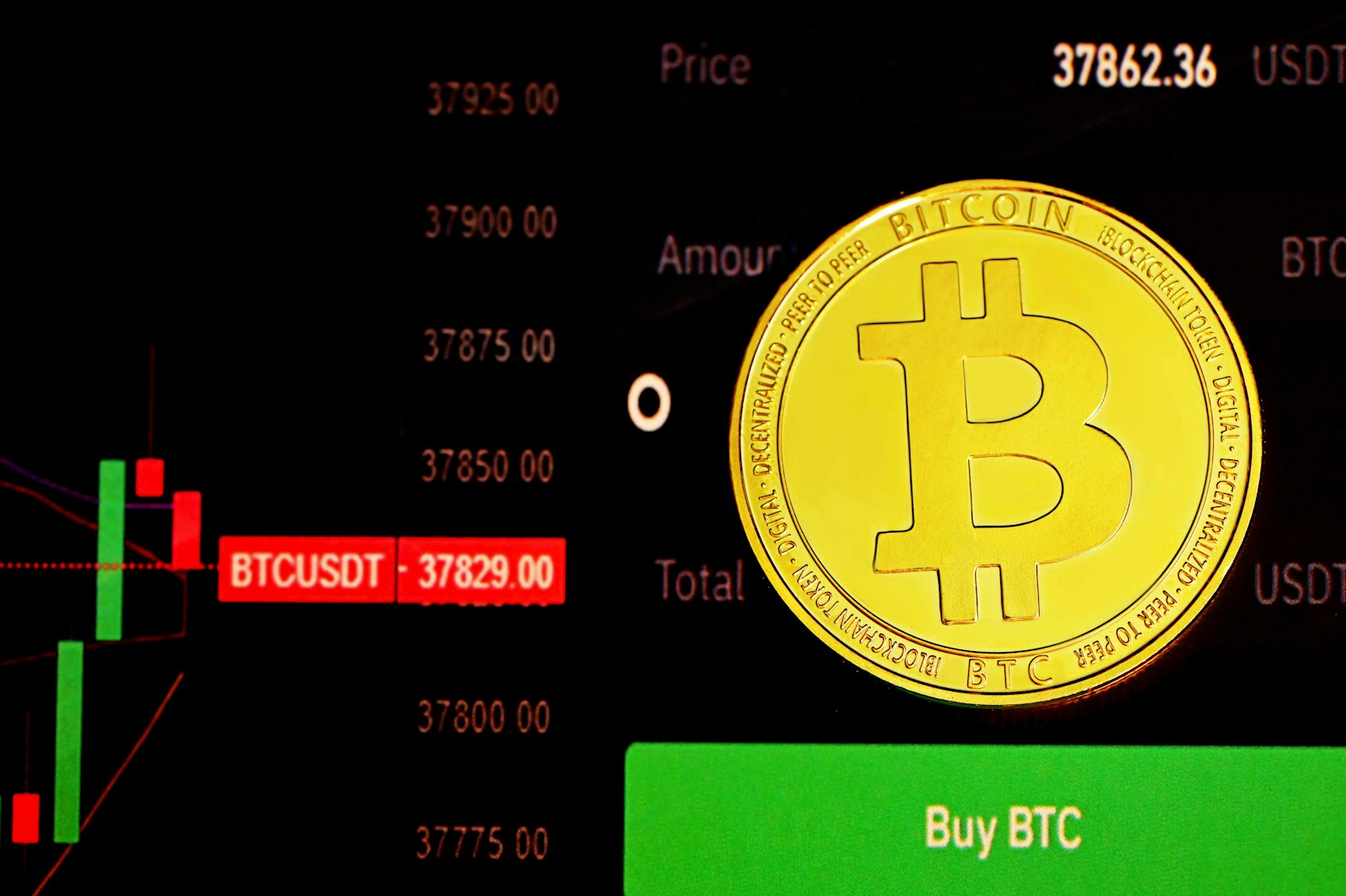
Choosing to maintain an investment position despite intense market fluctuations requires more than luck–it demands unwavering discipline and patience. In cryptocurrency markets, where volatility often exceeds 5% intraday, holding assets through turbulent periods can lead to significant long-term gains. For example, Bitcoin’s price surged over 1,300% from early 2020 to late 2021, rewarding those who resisted panic selling during sharp corrections.
The psychology behind this approach is critical. Emotional reactions to rapid price swings frequently trigger impulsive decisions that erode potential profits. Hodling counters this by focusing on a steady commitment rather than short-term speculation. Investors practicing this method often report improved stress management and clearer strategic thinking as they detach from daily noise and concentrate on macro trends.
Market behavior today highlights the importance of such resolve. With regulatory developments and institutional adoption shaping asset trajectories, timing entries or exits perfectly is nearly impossible. Instead, a consistent retention plan mitigates risks associated with mistimed trades while capitalizing on cumulative growth. This tactic aligns well with portfolio diversification principles and complements broader financial goals without requiring constant market monitoring.
Hodling: crypto’s buy and hold strategy [Crypto Fundamentals basics]
Long-term retention of cryptocurrency assets demands considerable patience and unwavering discipline. Data from multiple market cycles, including the 2017 and 2020-2021 bull runs, reveal that investors who maintained their positions without reacting to volatility often realized substantially higher returns. For instance, Bitcoin holders who refrained from liquidating during the 2018 downturn saw gains exceeding 300% by mid-2021. This approach capitalizes on market momentum over extended periods rather than short-term price fluctuations.
The psychological component plays a critical role in maintaining such an investment approach. Emotional responses like fear and greed frequently induce premature selling, undermining potential profits. Behavioral finance studies demonstrate that individuals employing systematic retention methods perform better on average due to reduced reactionary trading. Hence, cultivating mental resilience is as important as technical knowledge when adhering to this method.
Technical rationale behind prolonged asset retention
This method leverages inherent properties of blockchain networks, including deflationary supply mechanisms and increasing adoption rates. For example, Bitcoin’s programmed halving events reduce new supply approximately every four years, historically correlating with subsequent price appreciation phases lasting 12 to 18 months. Investors capitalizing on these cycles by retaining coins can benefit from compounded valuation increases tied to network scarcity and heightened demand.
Moreover, decentralized finance (DeFi) protocols enhance opportunities for passive income during holding periods through staking or liquidity provision, which can mitigate downside risk. Ethereum’s transition to Proof-of-Stake (PoS) further encourages long-term commitment by enabling holders to earn staking rewards while securing the network. Thus, integrating such mechanisms into a holding plan adds technical robustness beyond mere speculative intent.
Comparative analysis: reactive trading versus steady retention
Market data indicates that frequent trading often incurs significant costs–transaction fees, tax implications, and slippage–that erode net profitability over time. A recent study analyzing over 10,000 retail investor portfolios found that those executing fewer than ten trades annually outperformed more active traders by an average of 15%. The volatility characteristic of cryptocurrency markets amplifies these effects; rapid price swings tempt impulsive moves which seldom align with fundamental trends.
Conversely, systematic holding minimizes exposure to noise-driven market movements and capitalizes on macroeconomic drivers like institutional inflows or regulatory developments which unfold gradually. Notably, during regulatory clarifications in late 2023 concerning stablecoin frameworks in the US and EU, patient holders preserved portfolio value better than short-term speculators who reacted hastily to headlines.
Implementing a disciplined retention framework
An effective model requires predefined entry points based on fundamental analysis combined with clear exit criteria linked to strategic goals rather than emotional triggers. Utilizing tools such as dollar-cost averaging reduces timing risk while enhancing cost basis management amid fluctuating prices. Additionally, portfolio diversification across Layer-1 blockchains and utility tokens can distribute systemic risks inherent in any single project or ecosystem.
Risk management techniques including stop-loss orders should be applied cautiously within this paradigm since premature liquidation contradicts the overarching intention of enduring market cycles. Instead, emphasis lies on continuous reassessment of technological fundamentals and network health indicators–on-chain metrics like hash rate stability or transaction throughput provide objective signals supporting ongoing commitment decisions.
The evolving market context for long-term crypto investing
The maturation of digital asset markets introduces new variables affecting retention viability. Increasing regulatory clarity promotes institutional participation but also imposes compliance challenges that may influence asset liquidity profiles over time. Furthermore, integration of layer-two scaling solutions improves transaction efficiency and lowers barriers for widespread adoption–factors likely driving sustained demand growth beyond speculative interest alone.
Historical precedents such as Ethereum’s London Hard Fork demonstrate how protocol upgrades can catalyze value shifts rewarding patient stakeholders who maintained positions through transitional periods marked by uncertainty and temporary price corrections. This reinforces the notion that adherence to a well-conceived retention approach aligns closely with technological evolution trajectories within blockchain ecosystems.
Choosing Assets for Hodling
Prioritize assets with proven resilience and consistent market capitalization when selecting cryptocurrencies for a long-term investment approach. Established coins like Bitcoin (BTC) and Ethereum (ETH) demonstrate historical stability despite inherent volatility, making them reliable contenders for maintaining a position over extended periods. Market data from the past five years shows BTC’s average annualized volatility at approximately 70%, whereas smaller altcoins can exceed 150%, significantly increasing risk exposure.
Psychology plays a pivotal role in sustaining discipline through market fluctuations. Investors must prepare mentally for price swings that might exceed 50% intrayear, as seen during the 2021 crypto downturn. Adhering to a patient mindset helps avoid impulsive decisions triggered by short-term noise, preserving capital and maximizing returns in the long run. This emotional fortitude often separates successful asset retention from premature liquidation.
Technical and Fundamental Criteria
Evaluating blockchain project fundamentals is essential before committing to an asset for prolonged retention. Factors such as network security, decentralization level, developer activity, and real-world use cases provide objective indicators of sustainability. For example, Ethereum’s transition to proof-of-stake has improved energy efficiency and scalability prospects, which could influence its long-term valuation positively compared to less developed chains.
Conversely, purely speculative tokens lacking active ecosystems tend to suffer from extreme price swings without fundamental backing. Historical case studies like Dogecoin illustrate how meme-driven demand can create short-lived rallies but seldom sustain value over multiple market cycles. Therefore, integrating on-chain metrics alongside conventional financial analysis enhances selection accuracy.
Balancing Risk Through Diversification
Diversification remains crucial in managing portfolio volatility within this context of deferred liquidation. Allocating capital across various sectors–DeFi protocols, layer-1 blockchains, stablecoins–mitigates risks associated with sector-specific downturns or regulatory impacts. For instance, during the Terra ecosystem collapse in mid-2022, portfolios diversified beyond algorithmic stablecoins encountered fewer losses compared to those heavily concentrated.
- Layer-1 chains: Consider projects with robust developer communities like Solana or Avalanche.
- DeFi tokens: Prioritize platforms demonstrating sustainable TVL (Total Value Locked) growth.
- Stablecoins: Employ regulated options like USDC to reduce portfolio drawdowns while retaining liquidity.
Market Timing vs Persistent Commitment
The decision between timing entries and steadfast commitment affects performance outcomes substantially under high volatility conditions. Although some traders attempt tactical rebalancing during corrections, rigid adherence to a holding mindset frequently yields superior risk-adjusted returns over multi-year horizons according to empirical studies by firms such as Coin Metrics. How does one reconcile moments of extreme market euphoria or panic? Maintaining clear predefined thresholds based on quantitative signals can assist in navigating these phases without succumbing to emotion-driven exits.
The Impact of Regulatory Developments
Evolving legal frameworks shape asset viability and investor confidence over time. Jurisdictions imposing stringent rules on token classification or exchange operations influence liquidity dynamics directly impacting price stability. For example, recent SEC litigation against certain DeFi platforms has caused temporary depressions in affected tokens’ valuations but also prompted stronger compliance standards enhancing future durability.
Evolving Technological Trends Affecting Longevity
Technological advancements continue influencing which assets merit prolonged retention. Protocol upgrades introducing sharding or interoperability solutions enhance scalability and user adoption potential–a critical driver behind sustained valuation increases. Take Polkadot’s parachain model as an illustration; it fosters cross-chain communication improving ecosystem flexibility compared to isolated blockchains, indicating higher likelihood of enduring relevance amidst competition.
Selecting cryptocurrencies for extended holding requires integrating quantitative performance metrics with qualitative assessments of protocol robustness and regulatory environment adaptability. This multifaceted evaluation supports informed decisions that balance anticipated rewards against inherent risks presented by market volatility and psychological challenges inherent in maintaining composure through fluctuating cycles.
Managing Risks During Market Dips
Maintaining patience amid heightened volatility is fundamental to preserving capital during market downturns. Sudden price drops often trigger impulsive reactions, but empirical data from the 2018 crypto bear market reveals that investors who retained their positions avoided crystallizing losses exceeding 70%. This demonstrates that a disciplined approach aligned with a long-term perspective mitigates the risk of poor decision-making influenced by emotional swings.
Implementing a coherent risk management framework involves diversification and position sizing tailored to individual risk tolerance. For instance, allocating no more than 5-10% of total assets into highly volatile digital tokens can reduce exposure during corrections. Historical case studies, such as the March 2020 market crash caused by global economic shocks, show diversified portfolios experienced drawdowns approximately 30% less severe than concentrated holdings, underscoring the efficacy of prudent allocation.
Psychology’s Role in Investment Discipline
The psychology behind investor behavior significantly affects outcomes when prices decline sharply. Cognitive biases like loss aversion and herd mentality often exacerbate sell-offs. Studies using neurofinancial analysis confirm that stress responses impair rational judgment under pressure, making it critical to cultivate mental resilience through education and predefined exit criteria. A notable example includes institutional investors who maintain composure during dips, leveraging volatility to incrementally increase stakes without panic-induced errors.
A strategic emphasis on patience within a robust framework supports adherence to an overarching plan despite short-term turbulence. Technical indicators–such as moving averages and relative strength index (RSI)–can guide timing decisions but should complement rather than replace conviction in the investment thesis. Given recent advances in algorithmic trading that exploit fleeting volatility spikes, maintaining composure offers a comparative advantage for those focused on consistent growth rather than speculative gains.
Conclusion: Evaluating Long-Term Crypto Holding Metrics
Maximizing returns through a persistent investment approach requires rigorous attention to key performance indicators such as drawdown periods, compound annual growth rate (CAGR), and volatility-adjusted returns. For instance, analyzing Bitcoin’s CAGR of approximately 230% from 2013 to 2021 alongside its peak-to-trough retracements exceeding 80% underscores the necessity of psychological resilience and methodical patience when maintaining positions over extended horizons.
Market fluctuations remain inevitable, but disciplined adherence to a retention mindset mitigates impulsive reactions driven by short-term turbulence. This behavioral consistency often differentiates successful portfolios from those prone to premature liquidation during periods of elevated volatility. Consequently, integrating metrics like the Sortino ratio or maximum drawdown duration into portfolio reviews refines strategic decision-making processes, enabling investors to quantify risk tolerance aligned with their long-term goals.
Future Outlook and Strategic Implications
With increasing institutional participation and algorithmic trading shaping liquidity dynamics, future developments will likely demand more sophisticated analytical frameworks that incorporate sentiment analysis and on-chain data signals alongside classical financial metrics. For example, tracking wallet distribution changes or network activity spikes could provide early indicators of market sentiment shifts that test investor discipline before price corrections materialize.
Moreover, emerging decentralized finance (DeFi) protocols introduce novel avenues for capital efficiency without compromising the foundational principle of sustained asset accumulation. How might these innovations influence traditional retention models? Maintaining composure amid these evolving mechanisms will remain crucial as complexity grows.
- Quantitative benchmarks: Emphasize volatility-adjusted performance measures over raw return figures to better capture risk-reward balance.
- Behavioral psychology: Cultivating emotional control is equally important as technical analysis in preserving investment theses during downturns.
- Adaptive strategies: Employ real-time data analytics to reassess position sizing rather than reacting solely on price movements.
The interplay between patient capital allocation and dynamic market forces highlights an enduring truth: success in cryptocurrency accumulation hinges not only on timing but also on mental fortitude and strategic rigor. As ecosystem maturity advances, so too must our metrics evolve–balancing innovation with time-tested principles remains the cornerstone of sustainable wealth generation in this highly volatile domain.








